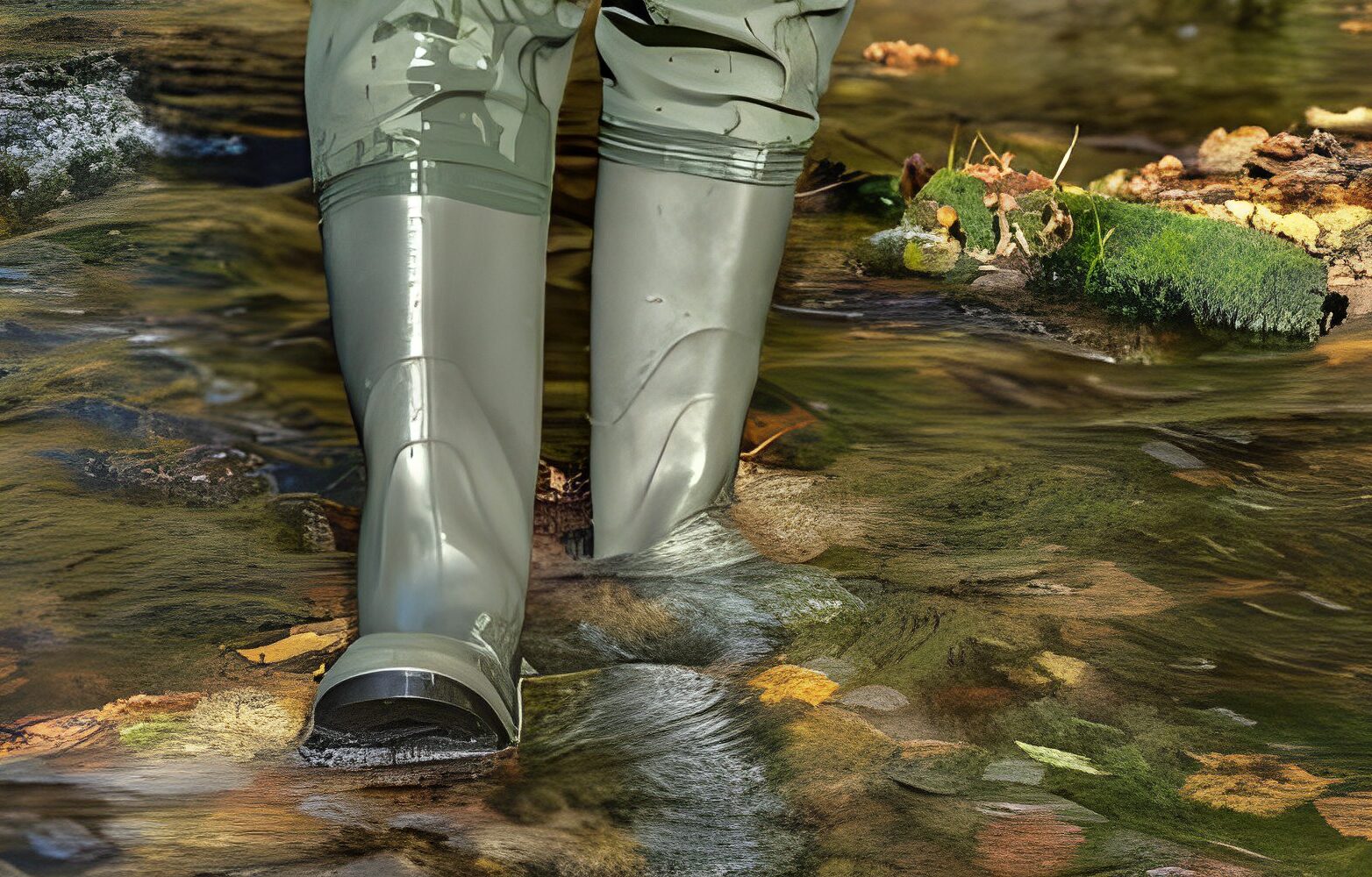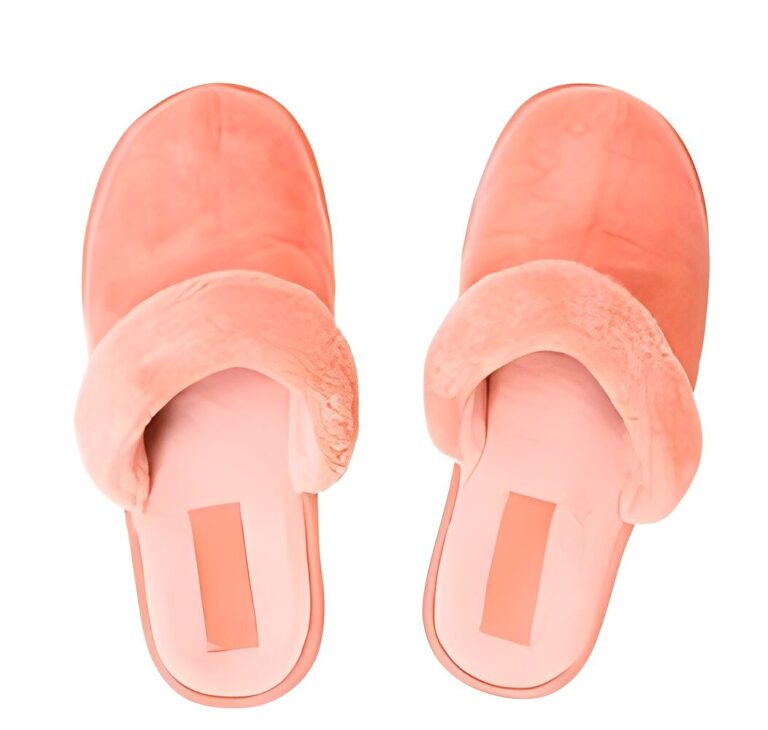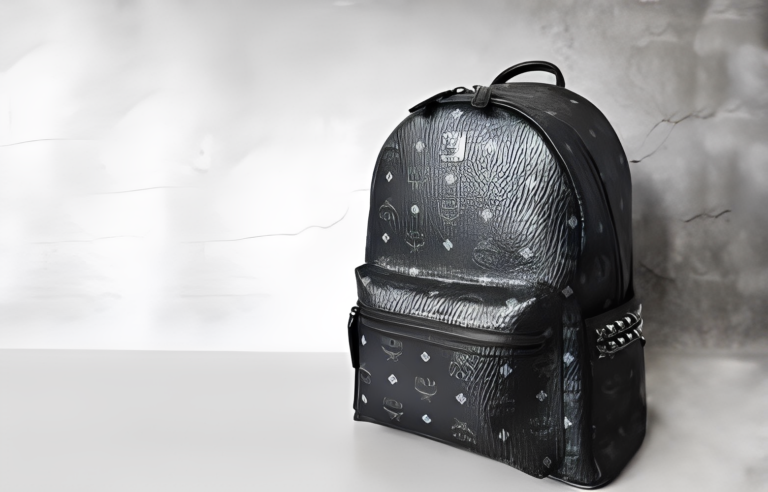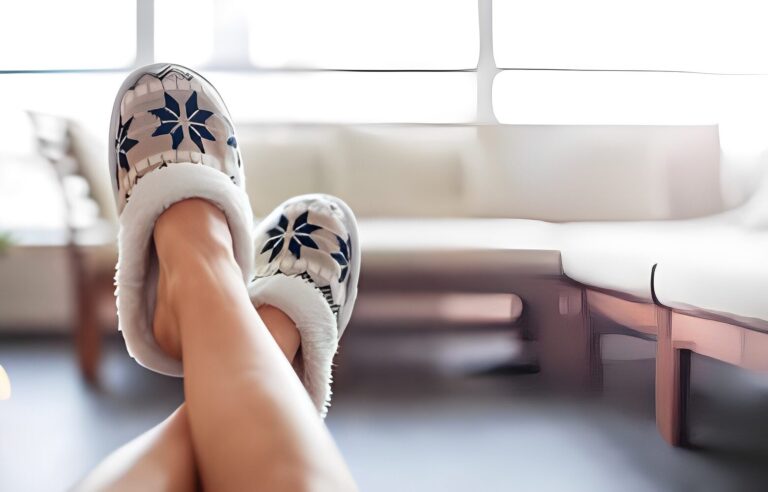How to Clean Waders with Boots
As an angler, you know the importance of keeping your gear in top condition. Among all the equipment you use, your waders and boots are perhaps the most essential. They protect you from the elements and allow you to wade through rivers and streams with ease. However, over time, your waders and boots can accumulate dirt, grime, and even invasive species. To ensure their longevity and performance, it’s crucial to clean them regularly.
In this comprehensive guide, we’ll walk you through the step-by-step process of cleaning your waders with boots. We’ll also provide you with valuable insights from industry experts and manufacturers on best practices for wader care. So grab your cleaning supplies, and let’s get started.
Understanding the Importance of Wader Care
Before we delve into the cleaning process, it’s essential to understand why proper wader care is crucial. Many anglers often overlook the maintenance of their waders, which can lead to significant problems down the line. Neglecting wader care not only affects their durability but also compromises their performance.
The Cost of Neglecting Wader Maintenance
Waders are a significant investment in your fly fishing gear. Quality waders can last for several seasons, providing you with comfort and protection in various fishing conditions. However, if you fail to care for your waders adequately, their lifespan can be significantly shortened. This means you’ll have to replace them sooner, leading to additional expenses.
Moreover, neglecting wader maintenance can result in leaks and damage. Over time, dirt, debris, and invasive species can accumulate on the fabric, compromising its integrity. Waders that are not cleaned regularly may develop weak spots, tears, or punctures, rendering them ineffective in keeping you dry.
The Benefits of Regular Cleaning
On the flip side, regular cleaning and maintenance of your waders offer numerous benefits. Firstly, cleaning removes dirt, grime, and other contaminants that can cause premature wear and tear. By keeping your waders clean, you prolong their lifespan and ensure they continue to perform optimally.
Secondly, cleaning your waders regularly allows you to inspect them for any signs of damage. Early detection of potential issues, such as leaks or weak spots, enables you to address them promptly, preventing further damage. Additionally, regular cleaning helps maintain the breathability of breathable waders, ensuring your comfort during long fishing sessions.
By prioritizing wader care, you not only extend the life of your gear but also enhance your overall fishing experience. Now that we understand the importance of wader care, let’s explore how often you should clean your waders.
How Often Should You Clean Your Waders?
The frequency at which you should clean your waders depends on various factors, including your fishing habits, the environment you fish in, and the type of waders you own. Let’s consider these factors and establish some general guidelines for cleaning frequency.
Factors to Consider
Consider the following factors when determining how often you should clean your waders:
- Frequency of Use: If you’re an avid angler who spends several days a week on the water, your waders will require more frequent cleaning compared to someone who fishes occasionally.
- Fishing Environment: The type of water you fish in also affects your cleaning schedule. If you primarily fish in clean, clear streams, your waders may not accumulate as much dirt and debris as someone who fishes in muddy or sandy rivers.
- Weather Conditions: Fishing in harsh weather conditions, such as heavy rain or snow, can increase the likelihood of dirt and grime sticking to your waders. Therefore, it’s essential to clean them more frequently under such circumstances.
- Invasive Species Concerns: If you fish in waters known for invasive species, it’s crucial to clean your waders thoroughly after each use to prevent the spread of these organisms.
General Guidelines for Cleaning Frequency
While the specific cleaning frequency will vary based on the factors mentioned above, here are some general guidelines to help you determine how often you should clean your waders:
- After Every Use: Inspect your waders after each fishing trip for any visible dirt, debris, or signs of damage. If you notice any, clean your waders promptly.
- Regular Cleaning: Even if your waders appear clean, it’s beneficial to clean them regularly to remove any contaminants that may not be visible to the naked eye. Consider cleaning your waders every 10-15 uses or at least once a month.
- Intensive Use: If you fish in challenging environments or spend long hours wading, you may need to clean your waders more frequently. Monitor the condition of your waders closely and clean them as needed.
By following these general guidelines, you can ensure that your waders remain in top condition and provide reliable performance. Now that we understand how often to clean our waders, let’s explore the different cleaning methods available.
Choosing the Right Cleaning Method
When it comes to cleaning your waders, you have several options to choose from. The method you select will depend on personal preference, the type of waders you own, and the level of dirt or grime buildup. Let’s explore the different approaches to wader cleaning and their pros and cons.
Read More: How to Clean Nuknuuk Slippers
Different Approaches to Wader Cleaning
- Machine Washing: Machine washing is a convenient method for cleaning waders, especially if you have neoprene or heavy-duty waders. Many modern waders are designed to withstand machine washing, making it a popular choice among anglers.
- Hand Washing: Hand washing is a gentler option that allows you to have more control over the cleaning process. It is particularly suitable for delicate or lightweight waders, such as breathable waders.
- Spot Cleaning: Spot cleaning involves targeting specific areas of your waders that require attention, such as stained or heavily soiled areas. This method is useful for quick touch-ups between thorough cleanings.
- Professional Cleaning: If you’re unsure about cleaning your waders yourself or if you own high-end waders, consider taking them to a professional cleaner. They have the expertise and specialized equipment to clean your waders effectively.
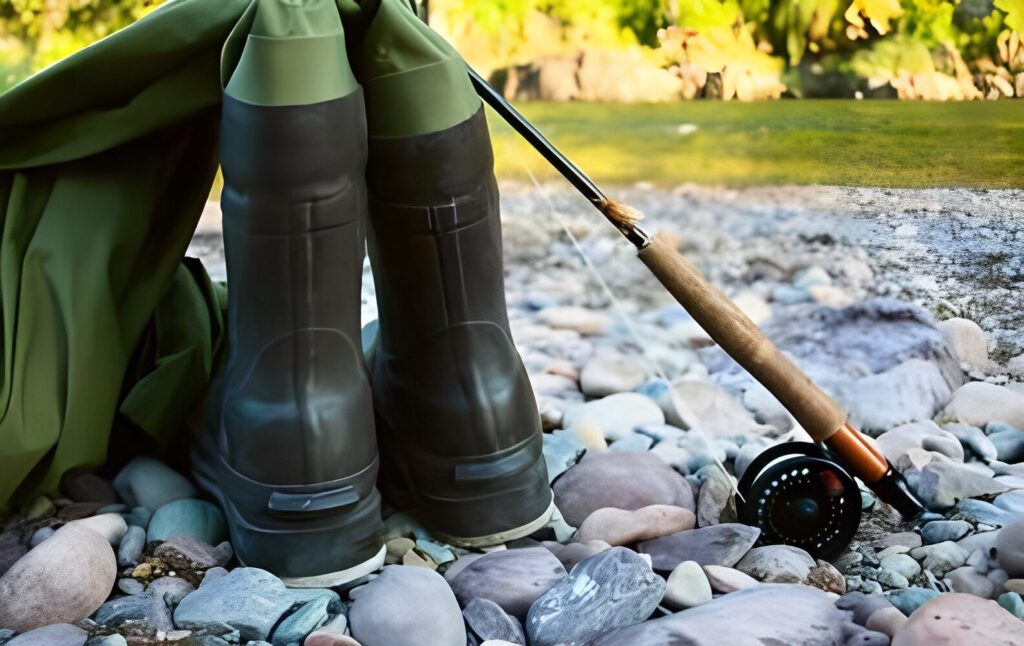
Pros and Cons of Each Method
Here are the pros and cons of each wader cleaning method to help you make an informed decision:
- Machine Washing:
- Pros:
- Convenient and time-saving
- Suitable for neoprene and heavy-duty waders
- Effective in removing dirt and grime
- Cons:
- May not be suitable for lightweight or breathable waders
- Requires a washing machine with a gentle cycle
- Potential risk of damage if not done correctly
- Pros:
- Hand Washing:
- Pros:
- Gentle and suitable for delicate waders
- Allows for better control and attention to detail
- Less risk of damage compared to machine washing
- Cons:
- Time-consuming
- Requires manual effort and thorough rinsing
- May not be as effective for heavily soiled waders
- Pros:
- Spot Cleaning:
- Pros:
- Quick and targeted cleaning
- Requires minimal time and effort
- Ideal for addressing specific stains or dirt patches
- Cons:
- Not a substitute for thorough cleaning
- Limited to small areas of concern
- May not remove deeply embedded dirt or grime
- Pros:
- Professional Cleaning:
- Pros:
- Expertise and specialized equipment
- Ensures thorough and effective cleaning
- Suitable for high-end or delicate waders
- Cons:
- Costly compared to DIY methods
- Requires finding a reliable professional cleaner
- May not be accessible in all locations
- Pros:
Now that we’ve explored the different cleaning methods available, let’s move on to preparing your waders for cleaning.
Preparing Your Waders for Cleaning
Before you begin the cleaning process, it’s essential to prepare your waders adequately. This involves removing dirt and debris, inspecting for damage, and taking precautions for specific types of waders. Let’s go through each step in detail.
Removing Dirt and Debris
Start by removing any loose dirt, sand, or debris from the exterior of your waders. Gently brush or shake off the particles, paying attention to seams, zippers, and other hard-to-reach areas. This step prevents excess dirt from getting into the washing machine or further embedding itself in the fabric during the cleaning process.
Inspecting for Damage
Next, carefully inspect your waders for any signs of damage, such as tears, punctures, or worn-out seams. Pay close attention to areas prone to stress, such as the knees, seat, and crotch. If you notice any damage, it’s crucial to address it before proceeding with cleaning. Minor repairs can be done yourself using wader repair kits, while significant damage may require professional repair or replacement.
Precautions for GORE-TEX and Breathable Waders
If you own GORE-TEX or other breathable waders, take extra precautions during the cleaning process to avoid damaging the breathable membrane. Avoid using harsh detergents, fabric softeners, or bleach, as these can compromise the breathability and waterproofing properties of the fabric. Instead, opt for specially formulated cleaning agents designed for breathable waders.
By properly preparing your waders before cleaning, you’ll ensure that the cleaning process is effective and minimize the risk of further damage. Now that your waders are ready, let’s explore the different cleaning methods in more detail.
Machine Washing vs. Hand Washing
When it comes to cleaning your waders, you have the option to either machine wash them or hand wash them. Both methods have their advantages and considerations. Let’s delve into each method and provide guidelines for effective cleaning.
Machine Washing Guidelines
Machine washing can be a convenient method for cleaning your waders, especially if you have neoprene or heavy-duty waders. Follow these guidelines for successful machine washing:
- Check the Manufacturer’s Instructions: Before machine washing your waders, refer to the manufacturer’s instructions to ensure that they are suitable for machine washing. Some waders may have specific care requirements or limitations.
- Close All Zippers and Fastenings: Ensure that all zippers, Velcro straps, and fastenings are securely closed. This prevents them from snagging or causing damage to other parts of your waders or the washing machine.
- Use a Gentle Cycle and Cold Water: Set your washing machine to a gentle cycle with cold water. Avoid using hot water, as it can damage the fabric and adhesive materials of your waders.
- Use Mild Detergent or Recommended Cleaning Agent: Add a mild detergent or a cleaning agent specifically designed for waders to the washing machine. Avoid using harsh chemicals, bleach, or fabric softeners, as they can compromise the integrity of the fabric.
- Avoid Overloading the Machine: Ensure that your washing machine is not overloaded with other items. Overloading can restrict the movement of your waders, preventing them from being cleaned thoroughly.
- Skip the Spin Cycle: Once the washing cycle is complete, skip the spin cycle. Instead, remove your waders from the machine and proceed to the drying process.
Machine washing can be a time-saving and effective method for cleaning your waders, especially if they are heavily soiled. However, it may not be suitable for lightweight or breathable waders, as the agitation and spinning motion of the washing machine can damage the delicate fabric.
Hand Washing Techniques
Hand washing is a gentler option that allows you to have more control over the cleaning process. It is particularly suitable for lightweight or breathable waders. Follow these techniques for effective hand washing:
- Fill a Clean Bathtub or Basin with Cold Water: Fill a clean bathtub or large basin with cold water. Ensure that there is enough water to fully submerge your waders.
- Add Mild Detergent or Recommended Cleaning Agent: Add a mild detergent or a cleaning agent specifically designed for waders to the water. Stir the water to create suds and distribute the detergent evenly.
- Immerse Your Waders in the Water: Gently immerse your waders in the water, ensuring that they are fully submerged. Use your hands to agitate the water and create a gentle cleaning motion.
- Focus on Soiled Areas: Pay close attention to heavily soiled areas, such as the knees or seat. Use a soft brush or sponge to gently scrub these areas, removing any dirt or stains.
- Rinse Thoroughly with Cold Water: Drain the soapy water and rinse your waders thoroughly with cold water. Continue rinsing until all traces of detergent are removed.
- Squeeze Out Excess Water: Carefully squeeze out excess water from your waders, taking care not to wring or twist them, as this can damage the fabric.
Hand washing allows for a more controlled and gentle cleaning process, making it suitable for lightweight or breathable waders. However, it may require more time and effort compared to machine washing. Once you’ve cleaned your waders, the next step is to ensure proper drying.
Recommended Detergents and Cleaning Agents
Choosing the right detergent or cleaning agent is crucial for effective wader cleaning. Using the wrong product can damage the fabric, compromise breathability, or reduce the lifespan of your waders. Let’s explore the different options available and their suitability for various types of waders.
Understanding Detergent Options
When selecting a detergent or cleaning agent for your waders, consider the following:
- Mild Detergents: Mild detergents, designed for delicate fabrics, are suitable for neoprene, heavy-duty, and lightweight waders. They effectively remove dirt and grime without compromising the integrity of the fabric.
- Environmentally Friendly Options: If you prefer eco-friendly products, look for biodegradable detergents or cleaning agents. These options are formulated to minimize environmental impact while still providing effective cleaning.
- Recommended Cleaning Agents: Some wader manufacturers may recommend specific cleaning agents or provide their own branded cleaning products. These options are often tailored to the specific fabric and construction of their waders, ensuring optimal cleaning results.
When in doubt, refer to the manufacturer’s instructions or reach out to their customer support for recommendations on suitable detergents or cleaning agents. Now that we’ve covered detergents and cleaning agents, let’s explore the drying process for your waders.
Drying Your Waders Properly
Properly drying your waders is essential to prevent mold, mildew, and damage to the fabric. The drying method you choose depends on the type of waders you own and the resources available to you. Let’s explore the two main drying options: air drying and machine drying.
Air Drying vs. Machine Drying
- Air Drying: Air drying is the most common and recommended method for drying waders. Hang your waders in a well-ventilated area, away from direct sunlight or heat sources. Ensure that they are fully extended to allow air circulation and prevent creasing. Depending on the climate and humidity levels, air drying can take anywhere from a few hours to a couple of days.
- Machine Drying: Machine drying is not recommended for most waders, as it can damage the fabric and adhesive materials. However, certain neoprene or heavy-duty waders may be suitable for machine drying. If your waders are deemed safe for machine drying, use a low heat or delicate setting. Place them in a mesh laundry bag or pillowcase to protect them from tumbling or snagging in the dryer.
Remember to consult the manufacturer’s instructions for specific drying guidelines related to your waders. Once your waders are dry, you may need to restore the DWR (Durable Water Repellent) coating. Let’s explore this process in more detail.
Restoring DWR (Durable Water Repellent) Coating
Durable Water Repellent (DWR) coating is a crucial feature of waders, as it helps water bead off the surface and prevents saturation. Over time, the DWR coating can wear off, reducing its effectiveness. However, you can restore the DWR coating to ensure your waders remain water-resistant. Here’s how:
- Clean Your Waders: Before applying a new DWR treatment, ensure that your waders are clean and free from any dirt, grime, or detergent residue. Follow the cleaning guidelines mentioned earlier to prepare your waders for the treatment.
- Choose a DWR Treatment: There are various DWR treatments available in the market. Look for a reputable brand that offers a spray-on or wash-in treatment specifically designed for waders. These treatments are formulated to bond with the fabric and restore the water-repellent properties.
- Apply the Treatment: Follow the manufacturer’s instructions for applying the DWR treatment. Spray the treatment evenly on the exterior of your waders or add it to the washing machine during the rinse cycle. Ensure that the treatment covers the entire surface of your waders for optimal performance.
- Dry Your Waders: After applying the DWR treatment, allow your waders to air dry completely. Avoid using heat sources or direct sunlight, as they can interfere with the bonding process of the treatment.
By restoring the DWR coating, you enhance the water repellency of your waders, ensuring that they keep you dry even in wet conditions. Now that we’ve covered the cleaning and drying process for waders let’s shift our focus to cleaning and disinfecting your wading boots.
Cleaning and Disinfecting Wading Boots
Wading boots play an integral role in your fly fishing gear, providing stability and traction on slippery surfaces. However, they can accumulate dirt, debris, and invasive species, just like your waders. To ensure the longevity of your boots and prevent the spread of invasive species, it’s essential to clean and disinfect them regularly.
Removing Dirt and Debris
Start by removing any loose dirt, sand, or debris from the exterior of your wading boots. Use a stiff brush or a boot scraper to dislodge stubborn dirt from the treads and crevices. Pay particular attention to the areas between the laces and the sole, as these areas often harbor dirt and invasive species.
Disinfection Methods
To effectively disinfect your wading boots and prevent the spread of invasive species, consider the following methods:
- Soaking in Disinfectant Solution: Prepare a disinfectant solution by diluting a recommended disinfectant, such as Virkon Aquatic, in water. Follow the manufacturer’s instructions for the appropriate concentration. Soak your boots in the solution for the recommended duration, typically up to 20 minutes. Rinse your boots thoroughly with clean water afterward.
- Freezing: Freezing your wading boots is an alternative method for killing invasive species. Place your boots in a chest freezer and ensure they remain frozen for a minimum of 24 hours. This method is effective against various pathogens, including New Zealand mudsnails.
- Hot Water Soaking: If you don’t have access to disinfectant solutions or a freezer, you can use hot water to kill invasive species. Soak your boots in water heated to approximately 140°F (60°C) for at least 15 minutes. Ensure that the water is not boiling, as excessive heat can damage your boots.
Choose the disinfection method that is most convenient and effective for you. Remember to check regulations and guidelines specific to your fishing location, as some areas may have specific requirements for preventing the spread of invasive species. By cleaning and disinfecting your wading boots, you contribute to the conservation of our water ecosystems.
Read More: How to Clean Glerups Glerups Wool Slippers
Preventing the Spread of Invasive Species
As responsible anglers, it’s essential to take steps to prevent the spread of invasive species. These organisms can have a detrimental impact on the delicate balance of ecosystems. Here are some best practices to minimize the risk of spreading invasive species:
- Clean and Disinfect Your Gear: Clean and disinfect your waders, boots, and any other gear that comes into contact with the water. By removing any traces of invasive species, you reduce the risk of unintentionally introducing them to new environments.
- Dry Your Gear: Ensure that your gear is thoroughly dry before using it in different bodies of water. Invasive species can survive in damp environments, so drying your gear helps eliminate any potential hitchhikers.
- Educate Yourself: Stay informed about invasive species prevalent in your fishing areas. Understand the signs and symptoms of infestations, and report any suspected sightings to the appropriate authorities.
- Follow Local Regulations: Familiarize yourself with local regulations and guidelines regarding the prevention of invasive species spread. Adhere to these regulations and encourage fellow anglers to do the same.
By following these best practices, we can help protect our water systems and preserve the natural habitats of our favorite fish species. Now that we’ve covered wader and boot care, let’s explore proper storage and maintenance techniques.
Proper Storage and Maintenance
Proper storage and maintenance play a crucial role in prolonging the lifespan of your waders and boots. By following these guidelines, you can ensure that your gear remains in top condition and ready for your next fishing adventure.
Storing Waders and Boots in the Off-Season
When the fishing season comes to an end or during extended breaks, it’s essential to store your waders and boots properly. Follow these steps for optimal storage:
- Clean and Dry Thoroughly: Before storing your waders and boots, ensure that they are clean and completely dry. Any residual moisture can lead to mold or mildew growth during storage.
- Store in a Cool, Dry Place: Choose a storage area that is cool, dry, and well-ventilated. Avoid areas prone to extreme temperatures, direct sunlight, or excess humidity, as these conditions can damage the fabric and materials of your gear.
- Hang or Store Flat: Depending on the available space, hang your waders or store them flat. If hanging, use a sturdy hanger to support the weight of the waders and prevent creasing. If storing flat, avoid stacking heavy items on top of your waders.
- Avoid Compression: Avoid compressing your waders or boots for extended periods, as this can lead to creases or deformities. Allow them to retain their natural shape during storage.
Inspecting and Repairing Damaged Gear
Regular inspections and prompt repairs are essential for maintaining the integrity of your waders and boots. Follow these steps for effective gear maintenance:
- Regular Inspections: Periodically inspect your waders and boots for any signs of damage, including tears, punctures, or worn-out seams. Pay close attention to high-stress areas and potential weak points.
- Prompt Repairs: Address any damage as soon as possible to prevent further deterioration. Minor repairs, such as patching small holes or reinforcing seams, can be done using wader repair kits. For significant damage or complex repairs, consult a professional or reach out to the manufacturer for assistance.
By practicing proper storage and maintenance, you can extend the lifespan of your waders and boots, saving you money and ensuring reliable performance. Now that we’ve covered all the essential aspects of wader and boot care, let’s address some common questions that anglers often have.
FAQs
Can I machine wash my neoprene waders?
How often should I inspect my waders for damage?
Is it necessary to clean my wading boots after every use?
Can I use regular laundry detergent to clean my waders?
Conclusion
Properly cleaning and maintaining your waders and boots is essential for their longevity and performance. By following the guidelines outlined in this comprehensive guide, you can ensure that your gear remains in top condition for many fishing seasons to come.
Remember to clean your waders regularly, considering factors such as frequency of use, fishing environment, and weather conditions. Choose the most suitable cleaning method, whether it’s machine washing or hand washing, and use recommended detergents or cleaning agents for optimal results.
After cleaning, ensure that your waders and boots are dried thoroughly, either through air drying or machine drying, depending on the type of waders you own. Additionally, consider restoring the DWR coating on your waders to enhance their water repellency.
Don’t forget about the proper cleaning and disinfection of your wading boots to prevent the spread of invasive species. By adhering to best practices and following local regulations, we can protect our water systems and preserve the natural habitats of our favorite fish species.
Lastly, store your waders and boots properly during the off-season, inspect them regularly for damage, and address any issues promptly. By practicing proper storage and maintenance, you can maximize the lifespan of your gear and ensure reliable performance.

